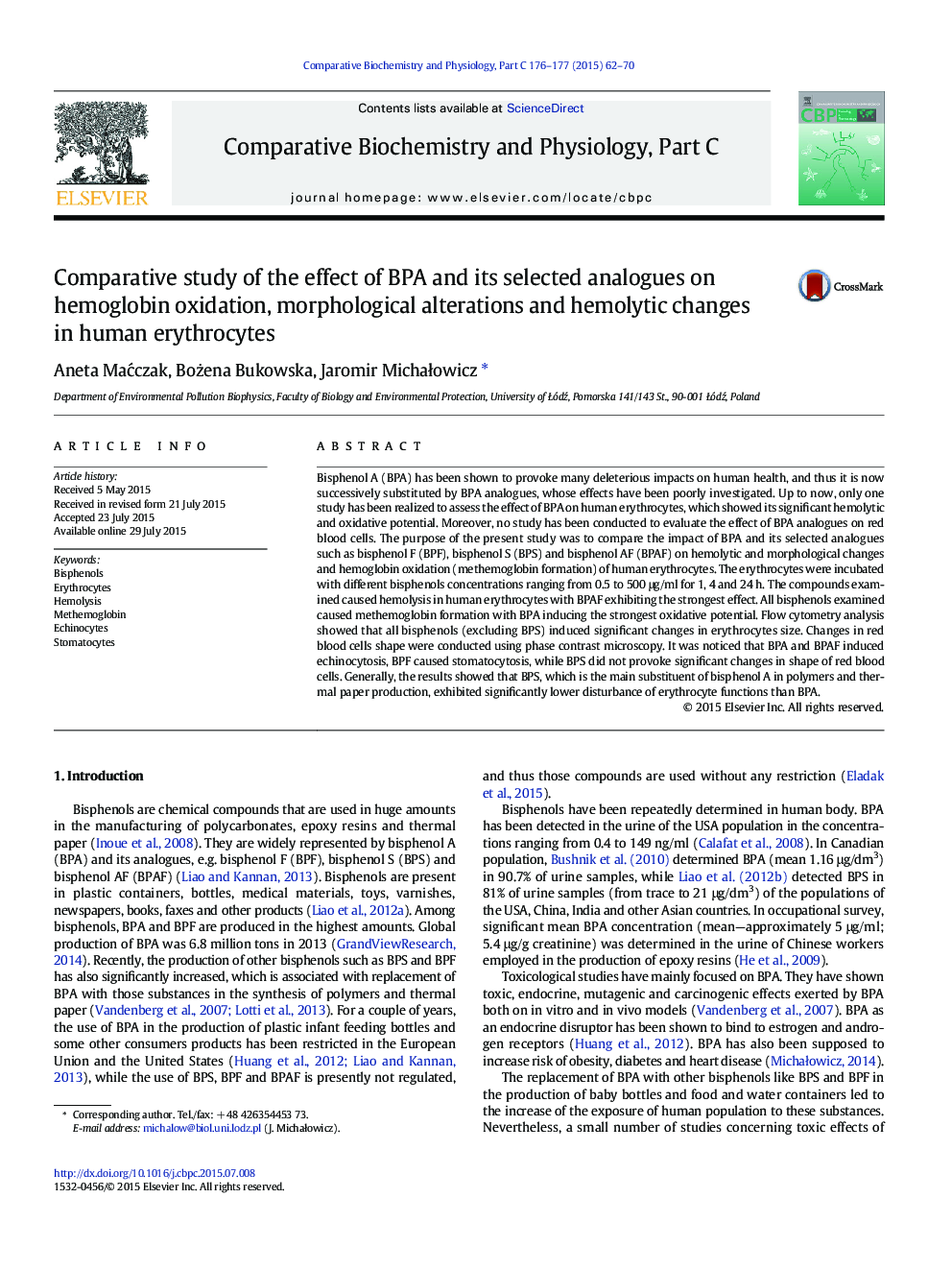| Article ID | Journal | Published Year | Pages | File Type |
|---|---|---|---|---|
| 8319108 | Comparative Biochemistry and Physiology Part C: Toxicology & Pharmacology | 2015 | 9 Pages |
Abstract
Bisphenol A (BPA) has been shown to provoke many deleterious impacts on human health, and thus it is now successively substituted by BPA analogues, whose effects have been poorly investigated. Up to now, only one study has been realized to assess the effect of BPA on human erythrocytes, which showed its significant hemolytic and oxidative potential. Moreover, no study has been conducted to evaluate the effect of BPA analogues on red blood cells. The purpose of the present study was to compare the impact of BPA and its selected analogues such as bisphenol F (BPF), bisphenol S (BPS) and bisphenol AF (BPAF) on hemolytic and morphological changes and hemoglobin oxidation (methemoglobin formation) of human erythrocytes. The erythrocytes were incubated with different bisphenols concentrations ranging from 0.5 to 500 μg/ml for 1, 4 and 24 h. The compounds examined caused hemolysis in human erythrocytes with BPAF exhibiting the strongest effect. All bisphenols examined caused methemoglobin formation with BPA inducing the strongest oxidative potential. Flow cytometry analysis showed that all bisphenols (excluding BPS) induced significant changes in erythrocytes size. Changes in red blood cells shape were conducted using phase contrast microscopy. It was noticed that BPA and BPAF induced echinocytosis, BPF caused stomatocytosis, while BPS did not provoke significant changes in shape of red blood cells. Generally, the results showed that BPS, which is the main substituent of bisphenol A in polymers and thermal paper production, exhibited significantly lower disturbance of erythrocyte functions than BPA.
Related Topics
Life Sciences
Biochemistry, Genetics and Molecular Biology
Biochemistry
Authors
Aneta MaÄczak, Bożena Bukowska, Jaromir MichaÅowicz,
